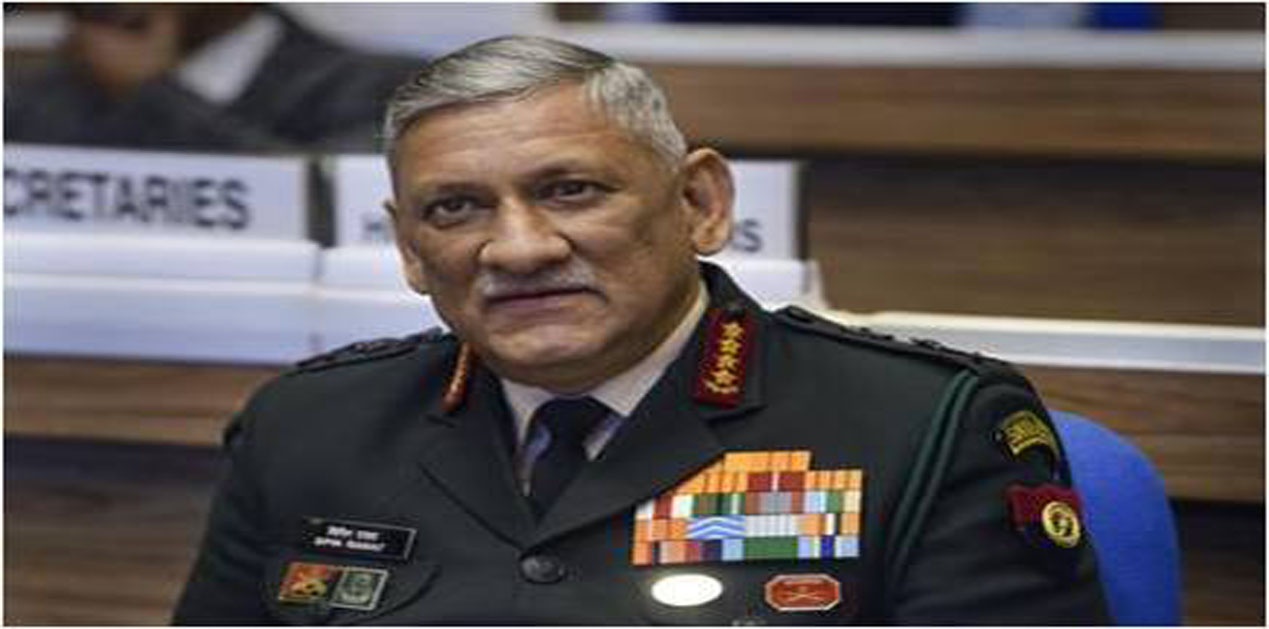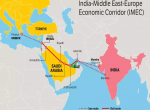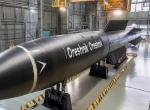The newly appointed Chief of Defence Staff (CDS) in his very first meeting after taking over on 01 Jan 2020, has directed Headquarters Integrated Defence Staff (IDS) to prepare a proposal by 30 Jun 2020 for the creation of Air Defence Command (ADC) besides other directions related to the establishment of a common logistics support pool for the defence forces in stations where two or more Services are stationed1,2
The idea of creation of Air Defence Command is not new, the same has been in existence for a long time and has been discussed and debated in many a professional forums, Seminars, Conferences and more.
This article brings out certain salient points connected with the proposal directly or indirectly.
Bottom Line First.
The bottom line is, that while the proposal for creating the ADC is a step that was long overdue, much caution needs to be exercised to ensure that while the air defences resources of the country are brought under the banner of ADC, the uniqueness of each Service and its distinct expertise in executing air defence functions in its respective core competency domain is not lost in ‘one colour and one banner’.
In short, if the air defence of the nation is to operate at its top effectiveness, then the ADC must retain the ‘colours of uniqueness’ of three Services each with its own shade of effectiveness and yet integrated as a holistic punch.
Probably an apt simile will be the ‘Trishul of Lord Shiva’ wherein, while all the three arms retain their individual killing edge, yet the three are cast together as a whole and represent one weapon with a deadly cumulative kill capability.
Raison d’etre
Very fundamentally, the raison d’etre for the existence of air defences of the nation, be it on land, sea or air is to counter the air threat from the adversary. The term 'air threat’ essentially implies the cumulative potential danger which our adversary holds, as his capability to cause damage and destruction to our vulnerabilities through the use of aerial threat vehicles and munitions in furtherance of, or in support of his war effort3.
The first gain from the ADC will be that it will give one common identity to the air defence resources of the nation which in itself will represent the cumulative capability of the country to take on the air threat from our adversaries.
Also, ADC will become a single point of reference and contact for all matters air defence at the national level.
Understanding the Responsibility Domain
Union War Book (UWB) is a classified document which lays down the role of official machinery in the times of armed conflict. This document is revised on need basis as to remain reflective of the existing situation.4
While the overall responsibility of the air defence of the national air space as per the above document is that of the Indian Air Force5, it has a larger connotation owing to the peculiar nature of the conduct of air defence battle. This is briefly enumerated.
While the overall responsibility as stated above remains unambiguous, the execution of the air defence function is a tri-service responsibility. This is driven by the fact that the prosecutor of the air threat sees no Service boundaries and can inflict crippling damage with equal devastation, be it on land, sea or air. To counter this threat in respective domains, each Service has its own air defence weapons which are suited to its peculiar battle space and are dedicated to provide air defence to its service specific assets.
For instance Army has got its air defence weapons which are particularly suited to provide air defence to its assets in the Tactical Battle Area (TBA).
Also, in keeping with its overall responsibility, it is the Air Force that provides the national level Integrated Air Command and Control System (IACCS) for the conduct of air defence battle at the national level6. Into the IACCS are knitted the respective Battle Management Command and Control ( BMC2) systems of the Army and the Navy ( details not covered)
It is felt that while the above arrangement of responsibility and execution has stayed on over the years, it could get a new dispensation as under:-
- Air defence Command is responsible for the air defence of the India.
- The above responsivity is executed with the cumulative air defence capability of the nation.
- This capability is the sum total of the capability of the three Services which is integrated along the trio of Sensors, Shooters and BMC2 systems belonging to the three Services and operating in their respective core competency domains as one Integrated Air Defence System ( IADCS) of the country
On Command of ADC.
While, there is no doubt that Air Force as the largest user of the air space is the most dominant player in all matters of air defence with the overall responsibility of the air defence of the Indian Air space, it is also a fact that the other two Services are also stake holders.
For instance the Navy, as stated above has all shades of air defence weapons, be it guns, SAMs or air defence aircrafts spanning all the three mediums of surface, sub-surface and air (albeit in much lesser quantum than Air Force) along with the state-of-the-art and automated BMC2 systems. The Army also is has its own exclusive class of weapons meant for the air defence of the mobile and mechanised elements of the field force in the TBA.
The purpose of stating the above is to drive home the point that much like the Strategic Forces Command or the Andaman and Nicobar Command, the command of the ADC could also be rotated tri-service starting from the Air Force.
On Overall Control of Air Defence Battle.
The BMC2 system for effective management of the air defence battle also called the Air Defence Control and Reporting System (ADCRS) is indeed the life-line of the air defence battle. So much is dependent on the ADCRS that a weak muscle in this domain can render best of the air defence weapons toothless and impotent.
Starting from the detection of the incoming threat, to fusing the inputs of multiple sensors to avoid duplicate reporting of same target, to carring out identification ‘Friend or Foe’, prioritisation of the hostile threat, dynamic selection of weapon systems to deliver seamless and successive fire on the threat and the minute-to-minute control of the entire air defence engagement up to the end game, all lies in the domain of ADCRS.
Following points are stated as to ADCRS in the ADC scenario:-
- As mentioned earlier, Air Force as the lead player with overall air defence responsibility of the nation has already put into place a national level BMC2 and ADCRS at the national level called the IACCS which rides on the Air Force (AF) net. This must continue unabated.
- With the above as given, the ADC must ensure the following:-
a. The current voids and shortcomings in the handshake (implying seamless integration) between the IACCS and the ADCRS systems of the Army and the Navy are addressed on top priority as a matter of operational expediency.
b. In the above context, it needs to be appreciated that while the IACCS may become strong and flawless, the strength of the ADCRS chain will lie in its weakest link. This weakest link could be the inadequacy of the seamless handshake.
c. It should be the top priority business of the ADC to address this all important issue with due alarm and alacrity.
d. ADC must also mobilise resources at the national level to address the sensor and communication voids in ADCRS. This will mean pushing cases for procurement for new early warning sensors, communication systems, command posts et al.
e. The ADC will also have to ensure multi-agency co-ordination including civil aviation players for smooth execution of ADCRS functions plus a host of the functions related to the insertion of the Unmanned Aerial Systems (UAS) in the National Air Space (NAS).
On Dynamic Assessment of Air Threat
Air threat and air defence are bound in an eternal cause-effect cycle. It is the qualitative and quantitative assessment of air threat from our potential adversaries that drives everything from tactics to strategies for air defence, procurement of weapons and munitions, deployment of field force and so on.
There are two requirements when it comes to assessment of air threat. One, it must be kept fully updated through frequent and time-bound revisions and two; it must be kept as objective and accurate as possible.
Till date the air threat at the national level was cumulated by inputs from multiple agencies (details not mentioned). ADC must provide an institutional platform where its ‘net assessment body’ must always keep at the cutting of the air threat which our country faces from our potential adversaries.
Tracking multiple develpments on this issue in a day-to-day manner, it will be possible to plan our future procurements and set a correct line and direction as to which way the air defence must go.
For instance, these days there is much talk of the developments taking place in the hypersonic weapons on our northern borders. While these are ‘developments’ (some realised , some in the pipeline), in what time frame and with what probability these will impact us; if at all, is the moot question. It is such questions and more with which the ADC must engage itself lest experts and analysts make the nation believe that the threat has operationalised yesterday and we must push headlong into building defences against it by diverting resources to it ( may be from some other Projects).
The balanced, dynamic and accurate assessment of the air threat in a continuous manner by the ADC will lead to putting off ‘false alarms’ and put our finite resources where these are needed most.
Nationalist Outlook on Identification of Vulnerabilities.
Currently there is classified arrangement (not explained) in place which on regular time interval undertakes the national level responsibility of identification and prioritisation of our vulnerabilities (in terms of Vulnerable Areas and Vulnerable Points or VAs and VPs). These are categorised Service wise (Army, Navy, Air Force), in terms of National Strategic Assets and in some other miscellaneous classes (not explained).
Based on the quantum and type of vulnerabilities identified as above, the air defence resources that are required to protect them is also projected. This forms the base reference and triggers various procurement actions in times to come.
The current outlook in this exercise is Service oriented (implying turf interests).With ADC, this outlook must change from ‘Service to Nation’. In particular the following is recommended to be ensured by the ADC:-
- A national perspective is taken in identifying the VAs/VPs.
- The quantum recommended to be procured for the air defence of the identified vulnerabilities must be rationalised across the three Services.
- The procurement must be awarded to the Service which in the wisdom of the ADC has the most core competency in handling a particular weapon system (tall order).
- It must be ensured by the ADC that no Service is allowed to pull a particular procurement is any one direction making the whole case skewed.
- The threat and the most suitable player to counter that by way of competency domain, alone must matter.
Stuck Case in the Procurement Chain.
The current procurement scenario for air defence weapons and support systems presents a mixed picture across board. There are a number of individual procurement cases being pursued by each Service and there are (a fewer number) procurement cases that are tri-Service. All this must change with the ADC coming in. Following is recommended:-
- The ADC must review all the current air defence cases, realign priorities (if required) and rechristen them as ADC cases.
- Be a single point contact of reference for monitoring the pursuance of various cases by the respective Service.
- Except where the requirement is absolutely service-specific, the cases must be projected as tri-service.
- Act as nodal point and a stake holder of air defence in resolving service-specific issues or raise a voice of concern with the Ministry of Defence (MoD) or the Govt in providing momentum to various tri-service cases that are stuck at various stages ( VSHORAD, QRSAM etc.)
Optimising the Training.
This is one field where the ADC can do a lot of positive work. Following is recommended:-
- ADC must take stock of all the air defence training assets of the three Services as national assets.
- Optimise utilisation of each training establishment by ensuring optimal utilisation of training assets.
- Review the training courses at various training establishments to cut out duplication and ensure optimal utilisation of finite resourses
- Organise tri-service air defence exercises at the national level
.
Tri-Service Identity
As a hygiene point the air defence warriors of the three Services could be given a national level identity through an accoutrement which could say ‘air defence’. Anything more than this will be wasteful.
Some Essential Constituents of the Organisation
- While the organisation and structuring of ADC will be worked out by HQ IDS over time, following components are considered essential:-
- Commander ADC could be a three star officer with his Deputy Commander as two star. In addition, while each Service cell could be headed by a two star officer, various other cells could be under a DDG/Director level officers.
a. Air Threat/Net Assessment Cell
b. Procurement Cell
c. Training Cell
d. Operation s Cell.
e. Coord Cell.
f. Service Cells ( Army, Navy, Air Force)
Deserving the first priority of the newly appointed CDS, ADC is indeed the need of the hour. The points stated above will ensure that ADC does not become yet another stage/platform in the line of hurdles but a worthwhile organisation with a definitive purpose of revamping the air defence of the country and giving it a national identity.
Endnotes
- “CDS Bipin Rawat seeks plan for air defence command,” at www.timesofindia.indiatimes.com. Accessed on 03 Jan 2020.
- “CDS Bipin Rawatfocuses on preparing roadmap for creation of air defence command,” at www.economictimes.indiatimes.com. Accessed on 03 Jan 2020.
- Lt Gen V K Saxena, “ Ground Based Air Defence in India; Challenges and Opportunities. Chapter1 The Changing Contours of air Threat” Penguin Press, 2019. Accessed on 03 Jan 2020.
- Govt to revise Union War Book to suit present situation,”at www.outlook india.com. Accessed on 04 Jan 2020.
- “CDS General Bipin Rawat, gets cracking, Air Defence Command first priority, “at www.theprint.in. Accessed on 04 Jan 2020.
- “Milestones:India’s Integrated Air Command and Control System (IACCS),” at www.janes.com Accessed on 04 Jan 2020.
(The paper is the author’s individual scholastic articulation. The author certifies that the article/paper is original in content, unpublished and it has not been submitted for publication/web upload elsewhere, and that the facts and figures quoted are duly referenced, as needed, and are believed to be correct). (The paper does not necessarily represent the organisational stance... More >>
Image Source: https://defenceaviationpost.com/wp-content/uploads/2020/01/BIPINRAWAT.jpeg










Post new comment